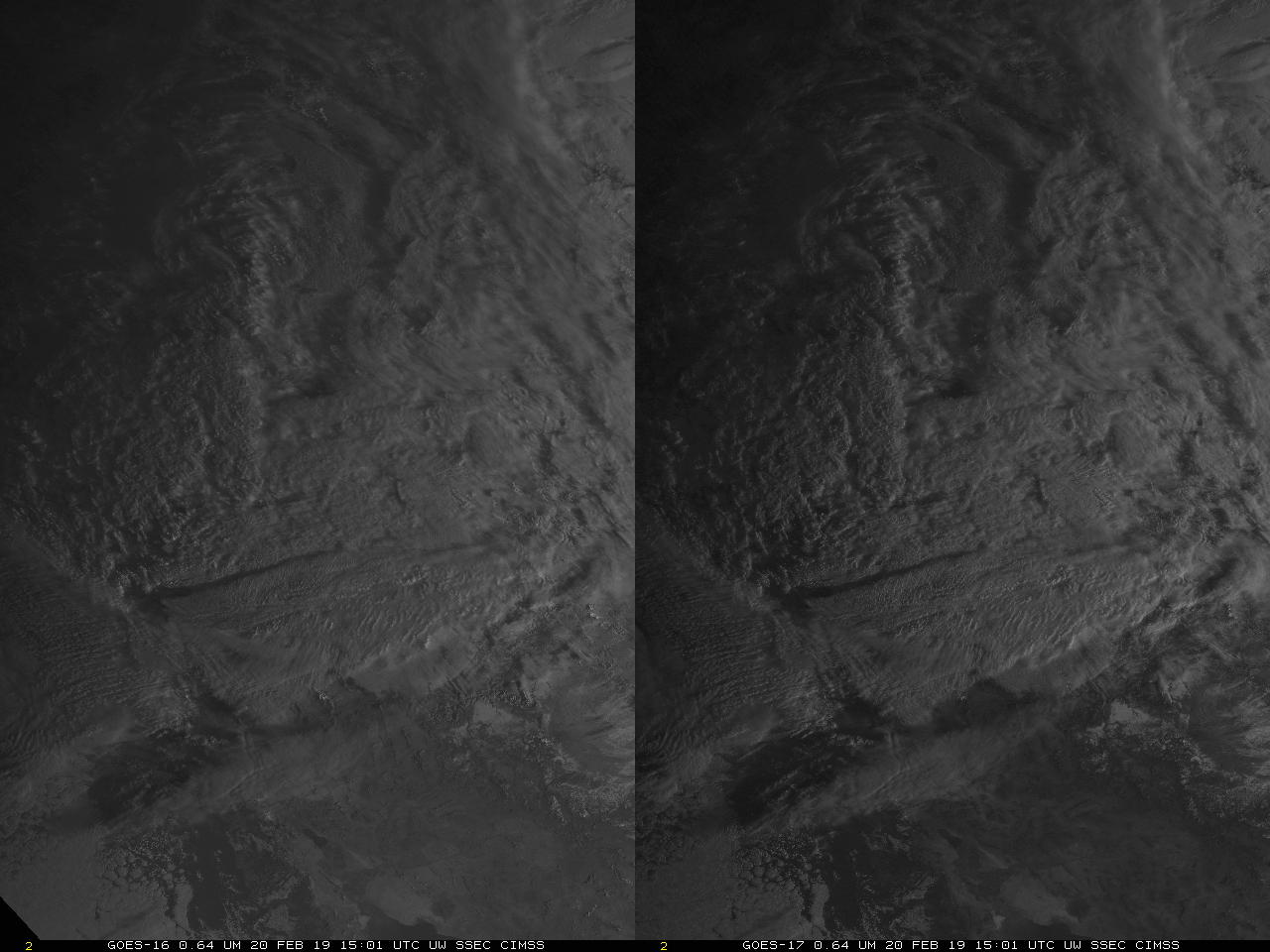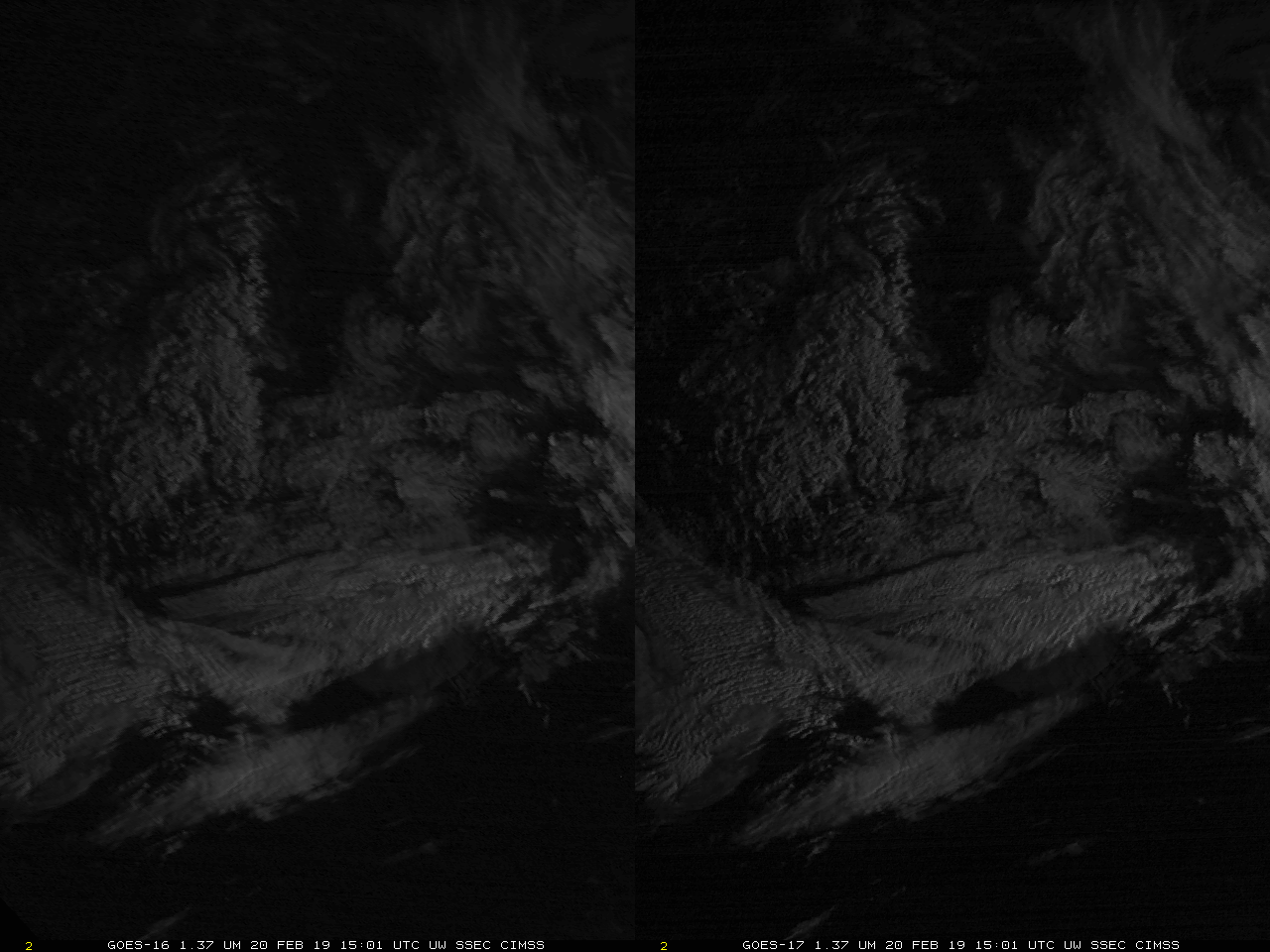Stereoscopic views in the Visible and Near-Infrared

GOES-16 (left) and GOES-17 (right) Visible Imagery (0.64 µm) from 1422 UTC to 2257 UTC on 20 February 2019 (Click to play mp4 animation)
Stereoscopic views of Visible Imagery (from GOES-16 and GOES-17, above) allow for visualization of three dimensions, as shown in the mp4 animation above (click here for an animated gif of the same scene). The imagery captures multiple cloud layers over the western United States (a map will show up in the animation) as a potent system moved eastward.
GOES-R includes four channels in the near-visible including the Cirrus Channel at 1.37 µm. The Cirrus Channel is useful here because the water vapor absorption of 1.37 µm energy means that any near-surface signal is absorbed, so mostly high-level clouds are present (low clouds become visible in the cirrus channel in very dry atmospheres). The animation below (the animated gif is here) is a stereoscopic view created with 1.37 µm imagery and the structure of the high clouds is more apparent.


